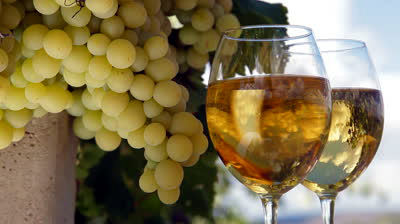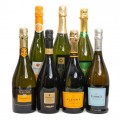The World’s Most Popular White Wine . . . by Joel Mann

Wine is often described in terms of masculinity or femininity. In that regard, Cabernet Sauvignon is considered the king as the world’s most popular red variety. The queen is undoubtedly the world’s most popular white wine, Chardonnay. The popularity of Chardonnay is a relatively recent event, dating back to the beginnings of post-World War II viticulture in new world locales such as California and Australia.
Its true dominance came recently, as modern palates fell in love with the wide range of flavors the grape provides, and the malleability for winemakers to alter those tastes in the cellar. While a few other white wines have gained a toe-hold recently in a backlash to everything Chardonnay, there is no denying the queen of white wines still dominates a near monopoly in consumer preference. This month I take a look at the Chardonnay grape, its origins, history, and how its versatility can satisfy a wide range of tastes in any wine market.
Chardonnay is one of the grapes of antiquity. No one knows its true origins, but the name Chardonnay is believed to come from the French village of the same name in the Burgundy Valley just north of Mâcon. The first references to Chardonnay in literature date back to Cistercian monks in the early 1300s who began widely planting the grape for commercial purposes through several regions of northeastern France. Recent genetic testing shows Chardonnay is a cross between the somewhat wild Pinot Noir and a native Croatian grape called Gouais Blanc.
It’s believed that Roman settlement brought Gouais Blanc from central Europe to France and as is it was planted in close proximity to Pinot Noir grapes, resulted in a number of either spontaneous or purposefully bred cross species, Chardonnay being one.
Chardonnay in the vineyard is known as a vigorous growing vine that produces tight, small to medium sized bunches of green skinned grapes that mature to a golden yellow at full ripeness. The grapes are fairly thin-skinned and require gentle handling to show their best. They grow well in most soils, but seem to prefer chalk, clay and limestone, common to its Burgundy home. Traditional clones of the variety were known to be low yielding, and as such the grape was not a major vineyard crop outside its traditional French heritage.
The major change came in the 1940s when California’s Wente Vineyards began a clonal breeding program, producing a number of Chardonnay clones with larger clusters and higher yields, making the variety a much more appealing grape for growers. Following the Paris tasting of 1976, the popularity of new world wines took off, and Chardonnay was the white wine of choice as new vineyards were planted to satisfy booming demand.
Chardonnay in the winery is a very versatile grape. It can produce a wide range of tastes from extremely light and crisp wines, to very fat, rich, and heavy wines loaded with malolactic and oak flavors. The climate in which Chardonnay is grown plays a large part in the final flavor profile. In general, Chardonnay prefers a cooler climate than a warmer one. Overly warm regions often tend to strip the grapes of acidity, producing weak, flabby tasting wines. On the extreme cool end are the very light and crisp wines of French Chablis and Champagne.
Cold to cool climate Chardonnay tends towards light fruit flavors, often described as green apple, pear, and lemon citrus with a crisp acidity that often lends to wines described as having minerality. Grown in slightly warmer climates, Chardonnay tends towards riper tropical fruit flavors such as melon, mango, guava, and notes of floral honeysuckle. Chardonnay is also very accepting of oak aging and malolactic fermentation, taking on the buttery and vanilla flavors that come from that particular style.
Most of the recent backlash against Chardonnay came from Napa and other northern California wineries going to the extreme with heavy toasted oak and massive buttery flavors that overpowered all other tastes. While a handful still make that over-the-top style, most have come back to a balanced wine that focuses on fruit flavors nuanced with buttery and oak character. There’s also been a recent rise in popularity of unoaked Chardonnay that expresses the grapes fruitiness.
Some hate it, many love it, but there’s no denying Chardonnay’s place as the top white wine in the world. Its range of flavors can satisfy all palate demands, and compliment almost any meal. So find the style that suits your tastes, and long live the queen.
Drink responsibly.





